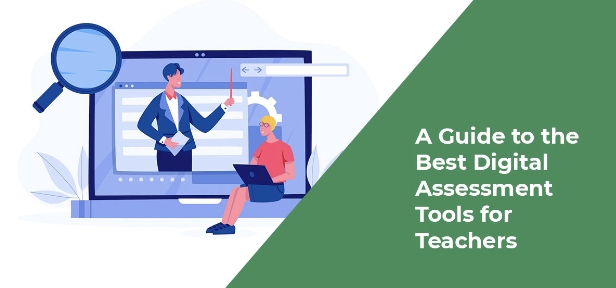Effective assessment tools for teachers are vital in understanding students’ progress, allowing teachers to tailor instruction for better learning outcomes. These tools can help teachers to gauge comprehension, identify learning gaps, and offer personalized support.
Math & ELA | PreK To Grade 5
Kids see fun.
You see real learning outcomes.
Watch your kids fall in love with math & reading through our scientifically designed curriculum.
Parents, try for free Teachers, use for free
In this blog, we’ll cover some of the best assessment tools that help you diversify their strategies and create a more engaging and impactful classroom experience.
1. SplashLearn
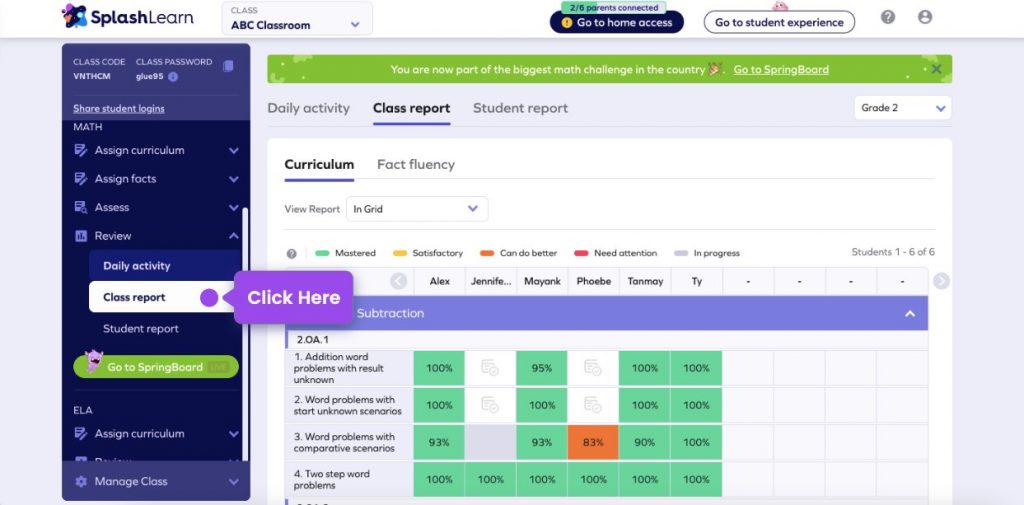
Objective: Utilize a gamified platform for adaptive learning, track student progress, and share detailed reports with parents.
Assessment Type: Formative
SplashLearn is one of the best free assessment tools for teachers, offering a gamified platform that blends learning and assessment seamlessly. Its math and reading exercises engage students, automatically tracking their progress. Teachers receive in-depth analytics that highlight each student’s strengths and weaknesses, enabling them to close learning gaps with targeted instruction.
Progress reports can be easily shared with parents, ensuring they are informed about their child’s progress and areas needing attention. This data-driven approach fosters a collaborative effort between teachers and parents to support each student’s educational journey, all while maintaining a fun and motivating learning environment.
2. Mentimeter
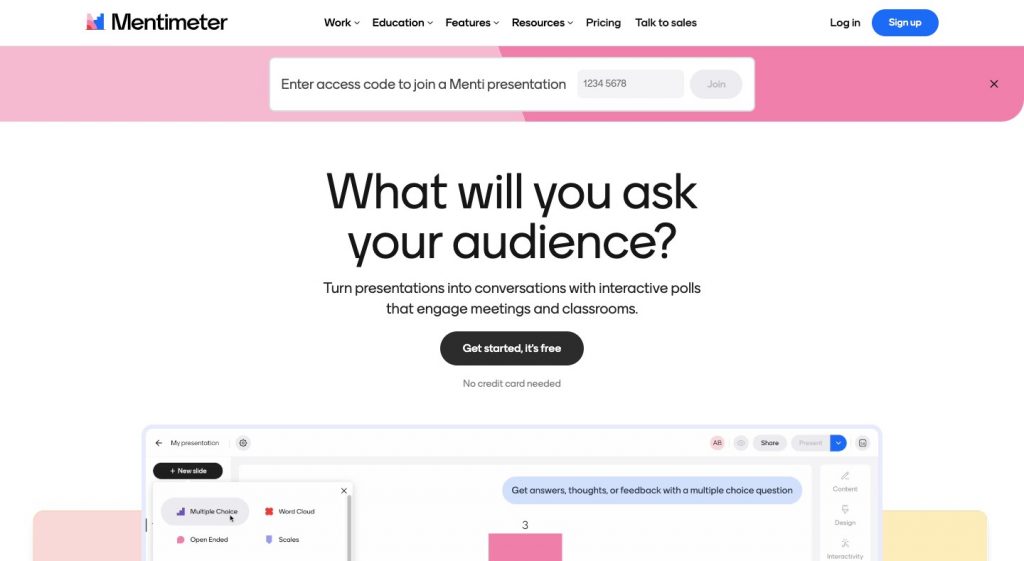
Objective: Engage students with live polls, quizzes, and word clouds to assess understanding.
Assessment Type: Formative
Mentimeter is an interactive teacher assessment tool that enhances real-time engagement in classrooms. Teachers can create live polls, quizzes, and generate word clouds to measure student understanding instantly. This platform facilitates immediate feedback, making it easier for teachers to adapt their teaching on the spot based on student responses. Its intuitive design ensures easy integration into any lesson plan, supporting a dynamic and responsive learning environment.
3. Kahoot!

Objective: Gamify learning through quizzes and discussions.
Assessment Type: Mainly formative, but can be used for summative assessments to gauge student learning at the end of a unit or semester.
Kahoot! stands out among assessment tools in teaching for its ability to make learning fun and interactive. This tool allows teachers to conduct quizzes, discussions, and surveys with a game-like interface that engages students. Teachers can utilize both custom-made and pre-designed quizzes to assess student knowledge and retention. The competitive element of Kahoot helps increase student engagement and motivation, providing teachers with clear insight into individual and class understanding.
4. Flip

Objective: assess verbal communication skills through video responses.
Assessment Type: Formative
Flip, formerly known as Flipgrid, is a video-based discussion platform that serves as an essential evaluation tool for teachers focusing on verbal communication and critical thinking skills. Students record and share video responses to prompts or questions, which teachers can review and assess. This format not only helps teachers evaluate students’ oral presentation skills but also encourages a more personal and reflective learning process.
5. Literably

Objective: Evaluate reading fluency and comprehension and automate error analysis.
Assessment Type: Formative
Literably is one of the online assessment tools for teachers, specializing in reading fluency and comprehension evaluation. Students read passages aloud while the platform records and analyzes their performance, automatically identifying reading errors and comprehension levels. Teachers receive detailed reports that pinpoint areas of improvement, helping them tailor reading instruction to individual needs. This tool reduces manual grading time and allows teachers to focus on enhancing each student’s reading skills.
Related Reading: Best Reading Fluency Activities for Young Readers
6. Quizalize

Objective: Design quizzes aligned with learning goals.
Assessment Type: Both formative and summative, suitable for regular practice or final evaluations.
Quizalize is a customizable education assessment tool that helps teachers design quizzes aligned with classroom objectives. This platform gives teachers in-depth reports on each student’s strengths and weaknesses, making it easier to identify learning gaps. The gamified approach keeps students engaged while offering targeted practice. Quizalize allows teachers to adapt lessons quickly based on quiz results.
7. Socrative
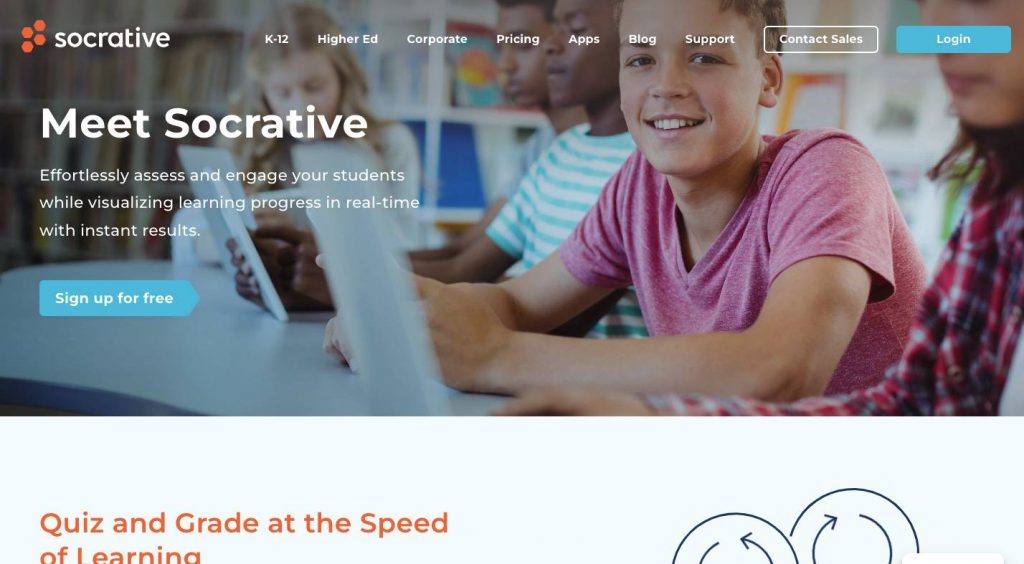
Objective: Assess student understanding with quizzes and quick questions and provide immediate feedback.
Assessment Type: Primarily formative, but adaptable for summative assessments.
Socrative is a versatile tool that offers a range of quizzes, quick questions, and exit tickets, making it one of the most flexible tools for assessment in education. Teachers can gauge student understanding with real-time feedback, allowing them to adjust lessons immediately or plan future instruction. The platform’s simplicity makes it easy to implement in any classroom environment, providing comprehensive data for targeted teaching.
8. Edpuzzle
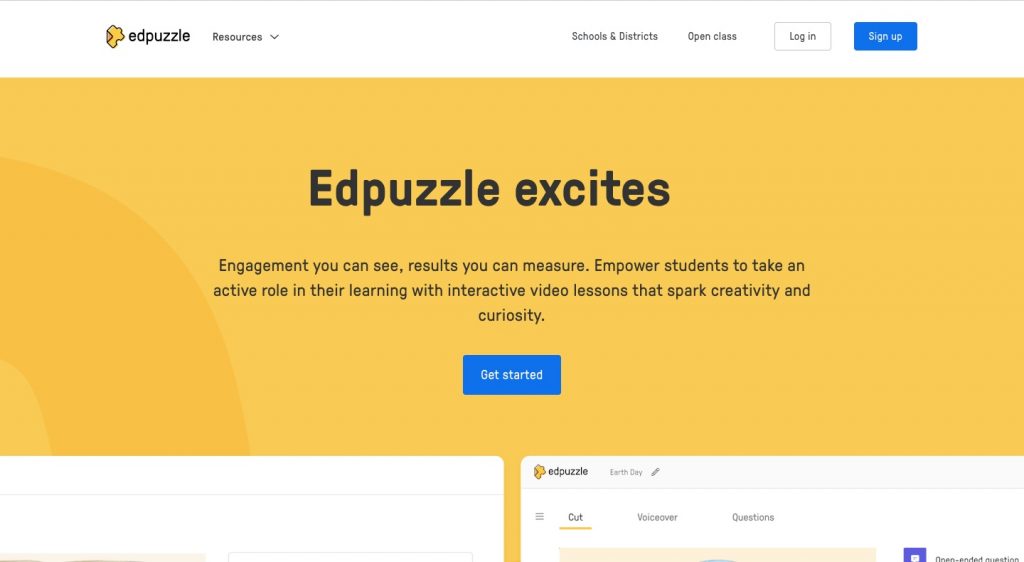
Objective: Monitor engagement and comprehension through interactive video lessons with embedded quizzes and notes.
Assessment Type: Formative
Edpuzzle is one of the best evaluation tools for teachers to create interactive, video-based learning experiences. By embedding quizzes and notes into educational videos, teachers can monitor student engagement and comprehension. This allows educators to gauge how well students understand key concepts, making it easier to address gaps in knowledge. The tool simplifies the assessment process, making it an ideal choice for personalized instruction.
9. Peergrade
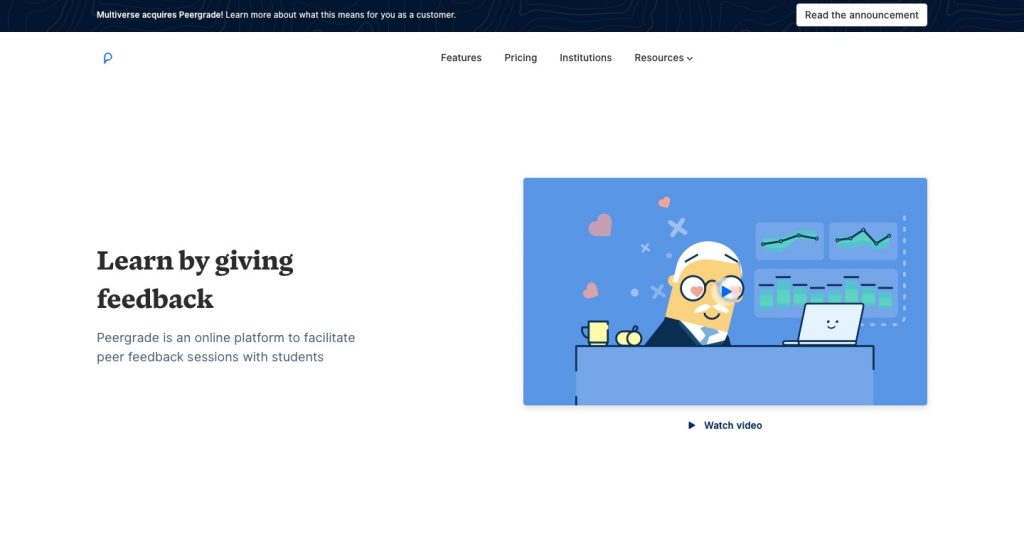
Objective: Foster peer review for critical thinking skills and monitor feedback quality.
Assessment Type: Formative
Peergrade stands out among educational assessment tools for fostering peer review. Students provide constructive feedback on each other’s work, encouraging critical thinking and refining communication skills. Teachers can monitor the reviews, ensuring quality and fairness while also identifying trends that require additional instruction. This approach promotes a collaborative learning culture and helps students become more reflective about their work.
10. Floop

Objective: Provide timely feedback on student submissions.
Assessment Type: Formative
Floop is a versatile school assessment tool focused on timely feedback. Teachers can quickly respond to student submissions with meaningful comments, making it easier to address misconceptions and reinforce positive habits. It also enhances peer review processes, encouraging students to offer constructive criticism to one another. Floop creates a collaborative learning environment that enables students to improve based on both teacher and peer feedback.
11. Jamboard
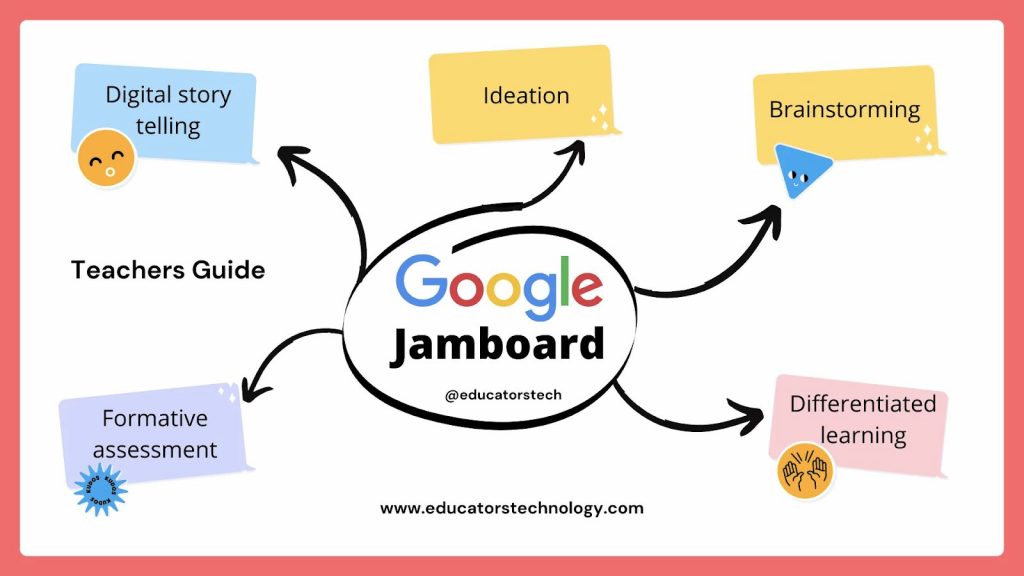
Objective: Support collaborative project-based learning with a digital whiteboard to assess group dynamics.
Assessment Type: Formative
Jamboard is a creative digital whiteboard. Its collaborative features allow students to work together on projects, solve problems, and brainstorm ideas in real-time. Teachers can gauge understanding by reviewing how students interact with their peers and contribute to the board. This tool is particularly useful for project-based learning, encouraging creativity while providing insights into group dynamics.
Related Reading: How to Build Project-Based Learning Plans for Classrooms
12. Pear Deck
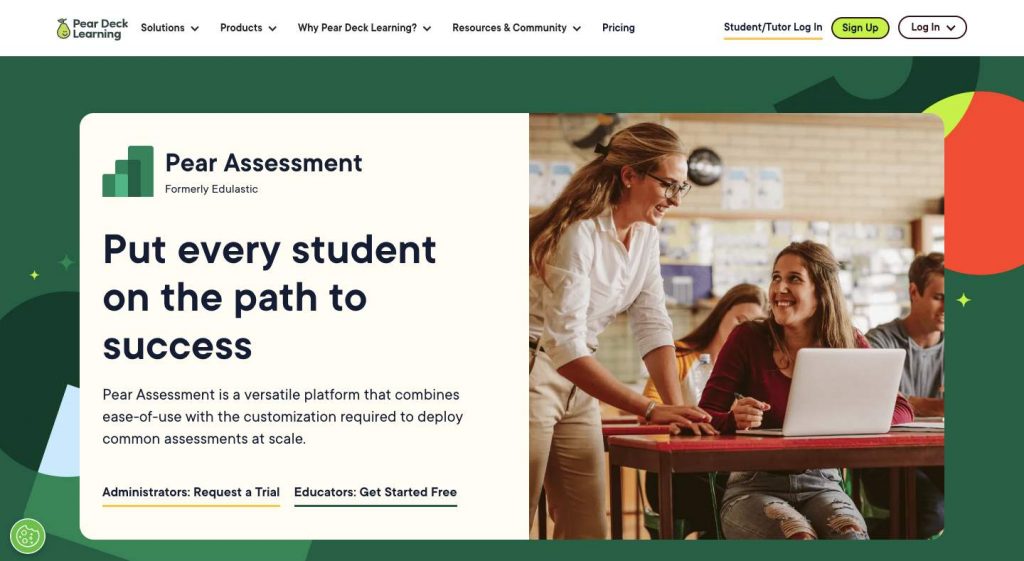
Objective: Integrate quizzes, polls, and drawing activities into presentations for real-time assessment.
Assessment Type: Formative
Pear Deck is an interactive presentation tool that seamlessly integrates digital assessment tool for teachers into lesson delivery. With live quizzes, polls, and drawing activities, educators can gauge student understanding and adapt their teaching in real-time. Pear Deck’s intuitive dashboard offers clear insights into class performance, making it easier to identify areas needing further clarification.
13. Nearpod
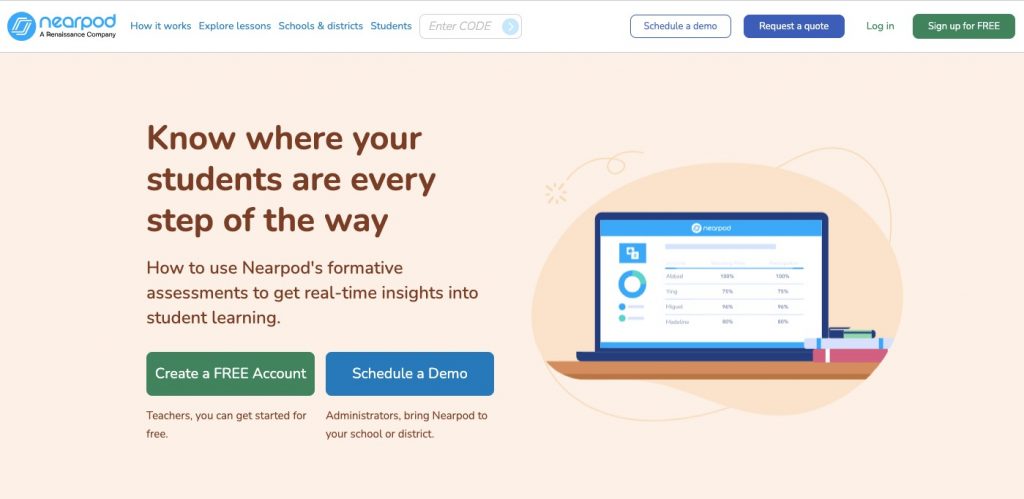
Objective: Use quizzes, polls, and exercises to collect instant data on student comprehension.
Assessment Type: Formative
Nearpod is a comprehensive lesson delivery tool with various interactive assessment activities like quizzes, polls, and drawing exercises. It helps teachers collect instant data on student comprehension, enabling them to adapt instruction on the fly. As one of the student assessment tools for teachers, Nearpod encourages participation and makes it easier for educators to tailor lessons according to real-time insights.
Related Reading: How to Use Formative Assessment in Your Classroom
14. AhaSlides

Objective: Foster engaging presentations with interactive quizzes, polls, and brainstorming activities for real-time feedback.
Assessment Type: Formative
AhaSlides is an interactive presentation platform that makes it easy for educators to incorporate real-time assessment seamlessly into their lessons. With versatile survey and poll features like multiple-choice polls, word cloud & open-ended, brainstorming, rating scale, and Q&A, teachers can see how much their students learn, get them involved, and adapt their instruction on the fly. Its user-friendly design, customization options, and dedicated customer support make AhaSlides an excellent tool for creating dynamic and informative learning experiences.”
Conclusion
Incorporating diverse assessment tools for teachers is crucial in meeting each student’s unique needs and improving learning outcomes. The tools discussed here can help you to identify gaps, adapt instruction, and provide meaningful feedback. By using these assessment tools effectively, you can create a more responsive and supportive learning environment that helps every student thrive.
Frequently Asked Questions (FAQs)
What are digital assessment tools for teachers?
Digital teacher assessment tools are online platforms or software that help teachers evaluate students’ understanding and track progress. They provide quizzes, polls, games, and reports that offer valuable insights to improve teaching strategies.
What are the four kinds of assessment?
The four kinds of assessment are diagnostic, formative, summative, and ipsative. Diagnostic assesses prior knowledge, formative provides ongoing feedback, summative measures cumulative understanding, and ipsative compares current performance to past results.
What is the most used assessment technique in early childhood?
Observation is the most used assessment technique in early childhood, where teachers watch and record children’s behavior and activities to gauge development and learning progress in a natural setting.

















